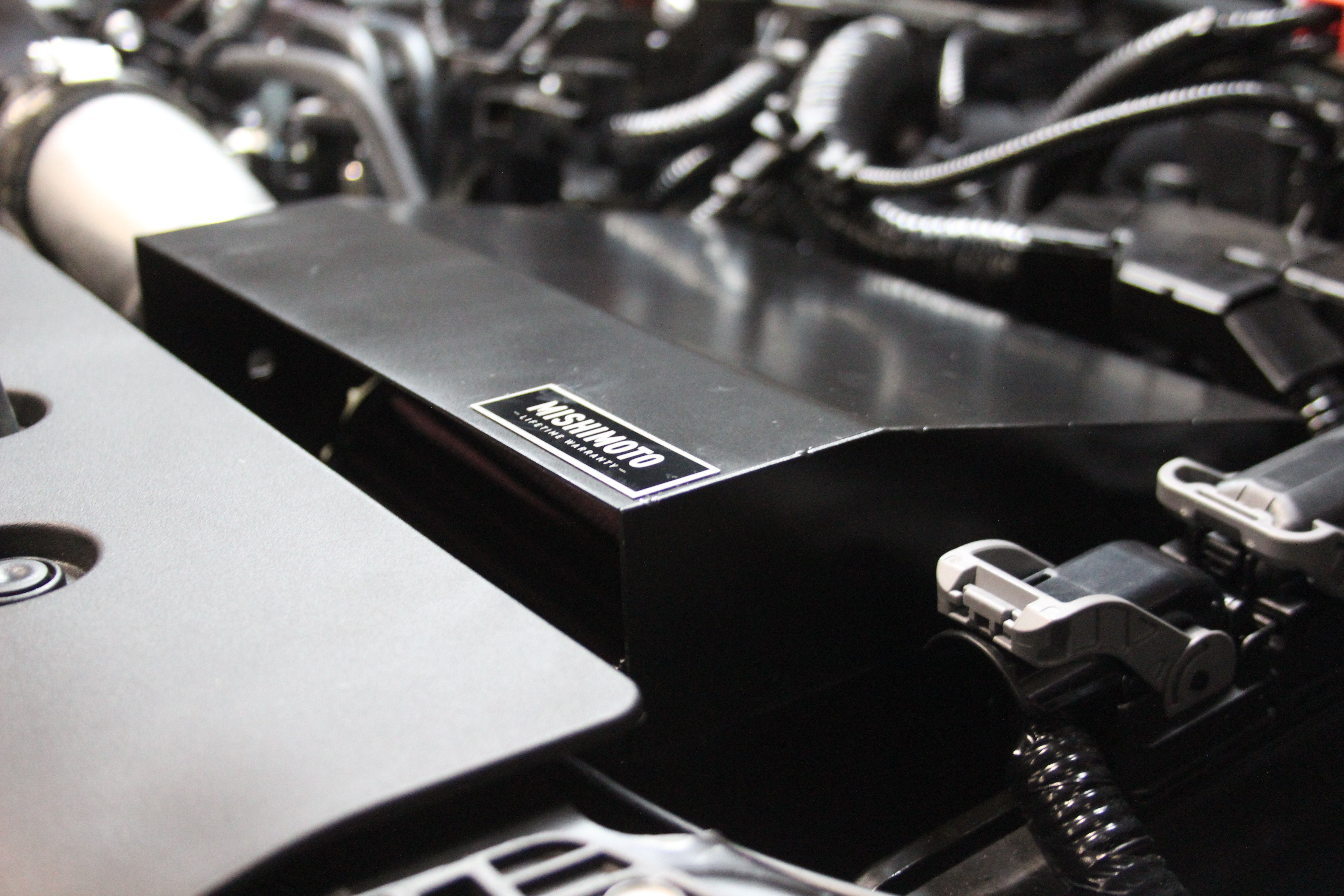
The Civic Has Boost! - Intake R&D, Part 3: Dyno Results
Here we have another update for our 2016 Civic intake project. This Civic has finally been put on our dyno to see how our intake performs - and we have some results to share with our Civic community! This car was tricky to dyno properly because of the continuously variable transmission (CVT), but no corners were cut during our testing. Let's jump right in!
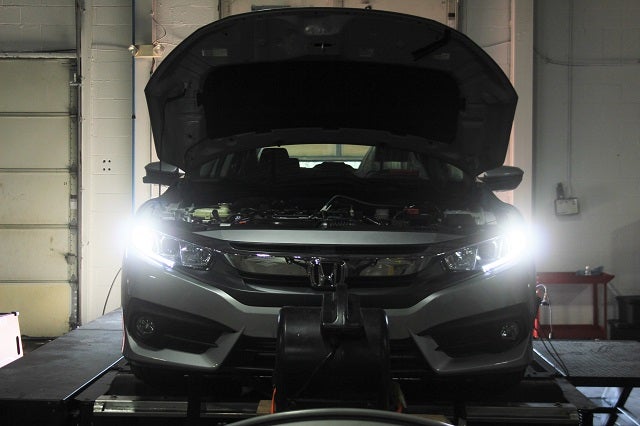
2016 Honda Civic parts dyno testing
The CVT
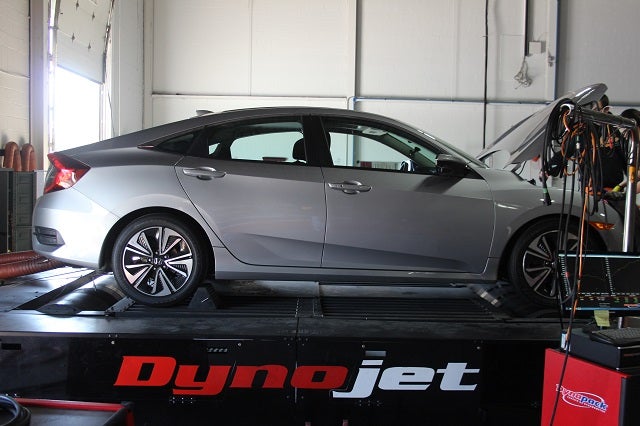
2016 Honda Civic parts dyno testing
Dyno testing a car with an automatic transmission is always a bit more complex than testing a manual transmission. The ability to shift the gears manually makes it a bit easier to set up a manual transmission on the dyno. With automatic shifting, however, finding an appropriate final gear ratio is not a simple task.
A continuously variable transmission (CVT), has a continuous range of effective gear ratios. The gear changes are more seamless than in a conventional mechanical transmission, which has a limited number of gear ratios. With a CVT design, the angular velocity stays constant, putting power to the wheels at a range of different speeds and with a higher efficiency than a mechanical transmission.
Because of the continuous change in gear ratios, we needed to adjust and reset our dyno to compensate for these 2016 Honda Civic parts. We opted to record our runs within the 3,700 - 5,800 rpm range and within a gear ratio difference of 1.0. These settings allowed for the most accuracy possible in comparable and repeatable runs with this CVT design.
The MAF housing
Generally, when designing the housing for the mass airflow (MAF) sensor, the inlet diameter should be as close as possible to the stock diameter. This allows the sensor to accurately read the increase of airflow while staying within an acceptable air-fuel ratio (AFR) that's safe to run on a stock tune. This isn't applicable to all vehicles; in some more sensitive engine ECUs, this increased airflow can result in a limp mode with self-adjusted ignition timing, fuel trims and throttle position. This situation destroys any potential for a power increase, so the MAF housing was important in the design of these prototype 2016 Honda Civic parts.
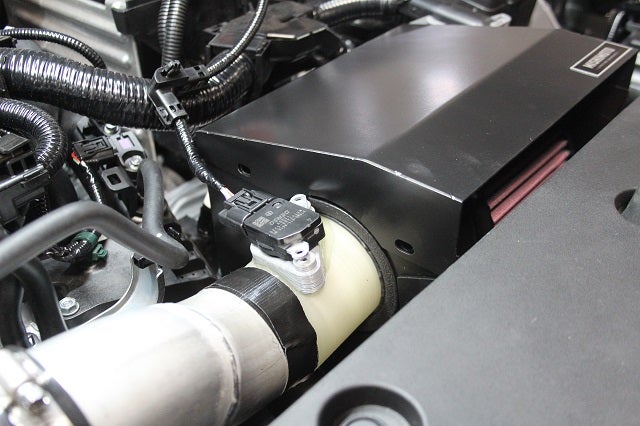
Prototype 2016 Honda Civic parts testing
Due to the proximity of the turbo and the radiator, we knew that the front section of the 2016 Civic intake pipe we planned to replace would need a precise design. Replacing this section with steel-reinforced silicone seemed like a great solution to help keep intake temperatures cool. We 3D printed the gray seen in the image above so we could get started with testing.
To find the most effective size for the MAF housing, we 3D printed multiple MAF housings of slightly different sizes. We first tried a MAF housing that was the same size as stock, but that yielded a loss in power. We then reduced the size to one millimeter smaller, and that put us back at stock power output.
This told us that reducing the size of the MAF housing might yield some power gains. So we reduced the MAF housing to two millimeters smaller than stock, and this is where we began to get some favorable results! Check out our graph below.
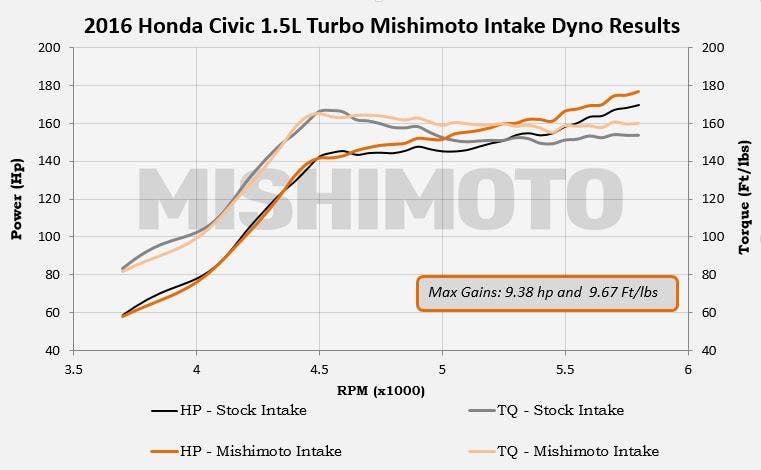
Dyno test results for our prototype 2016 Civic intake
Our results were taken from an overall average of the runs we did on the dyno. We never use any single highest or lowest run, because that can wildly skew the results. As you can see in the figure above, we made some good power gains; the power increase was 9.38 hp and 9.67 ft-lbs of torque. We did lose about 1.5 ft-lbs of torque for about 150 rpm, but we suspect that this minor loss in peak gains resulted from the way the CVT behaved on the dyno rather than an actual power loss. Also, the gains in torque everywhere else along the power-band more than makes up for that minor loss! After the 4,500 rpm mark, we were able to keep the power above stock all the way to the end of the run, which is good for a smooth, consistent power gain for this 2016 Civic intake.
How about our AFRs? Check out our graph below.
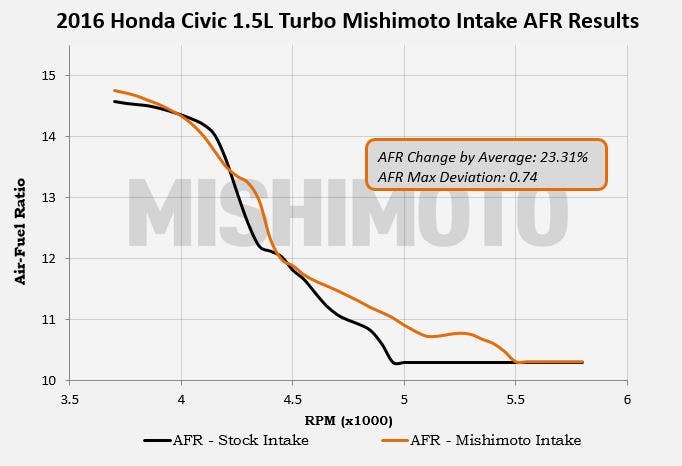
Dyno test results for our prototype 2016 Civic intake
This 2016 Civic intake will stay safe to run on a stock tune. We did lean the results out a bit, but this is to be expected, as more air is a sign that more power will be made.
How about a quick clip of what our intake sounds like on the dyno!
The tone has improved with a more throaty and aggressive sound under induction. We know that this is an important feature for this car, so we took time to make sure the intake sound was up to good standards.
What's Next?
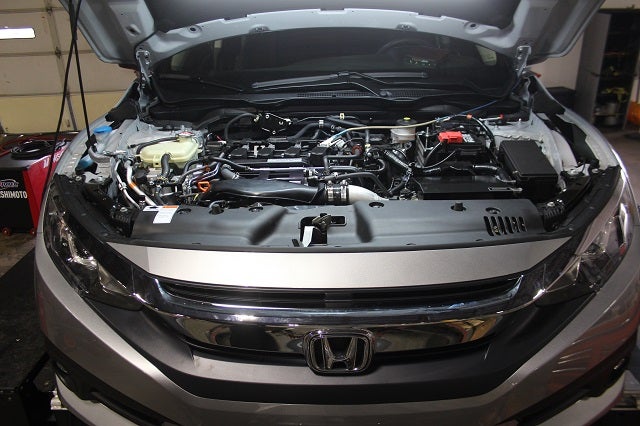
Prototype 2016 Civic intake
Now that we have some awesome testing results, we are ready to kick off our production process! Before we begin the stage of market production, we need to get a production sample of this intake to ensure perfect fitment. Once those pieces arrive at our facility, we'll have an awesome update for everyone.
Stay tuned and thanks for reading!
-Diamaan




